CrazyZ
SENIOR MEMBER

- Joined
- Mar 3, 2019
- Messages
- 4,617
- Reaction score
- 2
- Country
- Location
The former Afghan soldiers turning to gem mining to survive
In remote Nuristan province, some who lost their jobs after the Taliban takeover are now working in artisanal mines to support their families amid a struggling economy.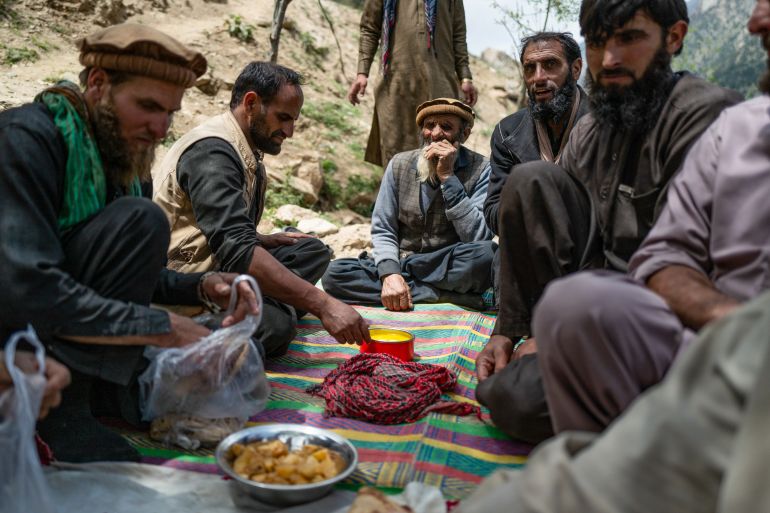
Gem miners take a lunch break outside their mine in Afghanistan's Nuristan province [Kern Hendricks/Al Jazeera]
By Kern Hendricks
Published On 18 Aug 202318 Aug 2023
Nuristan, Afghanistan – Like a crack of thunder, a deep blast echoes down a tree-lined valley a few kilometres from Parun, the capital of the northeastern Afghan province of Nuristan. At the base of a rocky hillside, smoke and chunks of rock spew from the mouth of a low tunnel. Some of the debris reaches the edge of a glassy river which runs through a small valley, causing ripples on the water’s surface.
Sheltering to one side of the tunnel entrance is Abdul Qader Abid. As the final pieces of shrapnel clatter to a standstill, he squints into the darkness of the tunnel. Rising, he wraps a green shawl around his mouth and nose, and heads into the billowing dust. There’s a payday glimmering in the rubble, and he’s eager to find it.
Abid, a stalky man in his mid-thirties with a neatly-trimmed beard and striking green eyes, walks gingerly, small stones crunching underfoot. After less than 30 metres (98 feet), the tunnel opens into a large chamber nearly double his height.
In early 2022, Abid and his fellow miners leased a plot of land to mine and have been working there for nearly six months. Tunnelling into the hillside has been slow work and the shaft is still shallow.
Inside the cavern, there is enough room for half a dozen miners to work at one time, and, only a few minutes after the dust from the blast has settled, the space becomes a flurry of activity. Some men wield pickaxes to loosen the rock, others toss shovelfuls of mud into wheelbarrows, while others squat amid piles of grey rubble, picking up stones and holding them up to the thin beams of sunlight that peek through the holes in the roof.
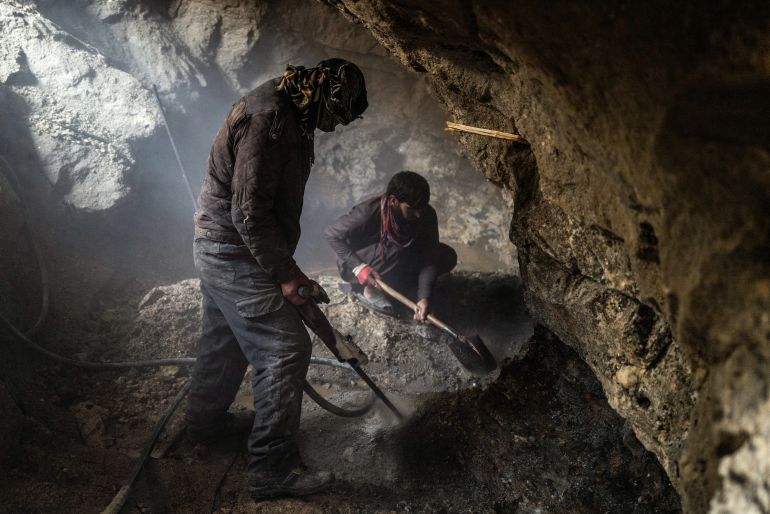
‘We were worried’
In his previous life, Abid was a soldier with the National Directorate of Security (NDS), the United States-backed republic government’s intelligence agency. Like thousands of others, when the Afghan republic government fell to the Taliban in August 2021, his job disappeared overnight, and his future met with uncertainty. He, along with many of his former military compatriots, was unsure if he could trust the promises of amnesty for former government soldiers proffered by the Taliban after the takeover.In one of the group’s first official press conferences after coming to power, Taliban spokesperson Zabihullah Mujahid seemed to offer a sort of olive branch. “Thousands of soldiers who have fought us for 20 years, after the occupation, all of them have been pardoned … if they come back to their homes, no one is going to do anything to them; they will be safe.”
A 2022 report by the United Nations said that since the Taliban takeover, the group or its affiliates have been involved in the deaths of more than 100 former government officials, security forces and people who worked with international troops. The Taliban has consistently denied involvement.
“No one knew what was going to happen to us,” Abid says, taking himself back to the first weeks of Taliban rule. “Of course we were worried.”
Advertisement
But, for him and the other former soldiers he now mines with, the attacks never came. With no jobs, Abid soon realised that the biggest danger he and his family would soon face would be putting food on the table. Abid is the sole earner for his family of 16 which includes his mother, two wives and his seven children.
Sign up for Al Jazeera
Week in the Middle East
Catch up on our coverage of the region, all in one place.Sign up
By signing up, you agree to our Privacy Policy
protected by reCAPTCHA
So Abid, along with many of his fellow ex-soldiers from Nuristan and neighbouring Kunar province to the south, decided to turn to one of the only jobs that still offered the prospect of a decent income in one of Afghanistan’s most remote regions — mining for gemstones.
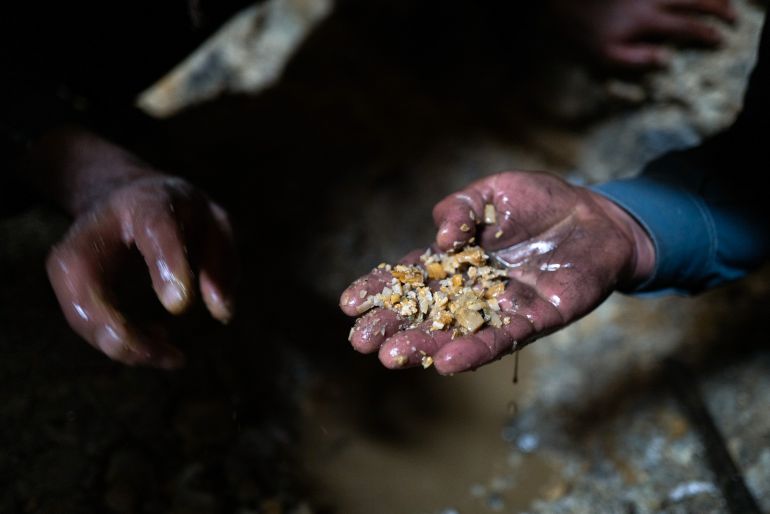
Gemstones
Gem mining in Afghanistan has a long and storied history stretching back about 2,300 years to the period of Alexander the Great. By the 10th century, the gem mines of northern and eastern Afghanistan – in the lands bordering Tajikistan and Pakistan – were famed for their rubies, sapphires, tourmaline, lapis lazuli and topaz.Much more recently, gem mines in the northeastern provinces of Nuristan, Kunar and Badakhshan served as a source of income for the Taliban as it struggled to fund its armed uprising against the republic government. This led the government to crack down on illegal gem mining in many areas of the country in an effort to prevent proceeds from flowing into the hands of the Taliban and local gem mafias.
Although slow to develop, the gem trade had grown to become a huge part of Afghanistan’s economic output. In 2019, precious metals, gems and jewellery made up 45 percent of Afghanistan’s total legal exports, with a total value of $1bn, according to The Observatory of Economic Complexity.
Although the gem mining sector is composed almost entirely of small, artisanal mines, it is an important source of jobs for local communities like Abid’s, particularly in a country which has faced political and economic isolation since the Taliban took control. For men like Abid, it has meant being able to provide for his family as Afghanistan continues to face an unprecedented economic crisis.
Advertisement
Even before the takeover, Afghanistan’s economy was struggling, and reliant almost completely on foreign aid. When the Taliban swept into power, much of Afghanistan’s international aid was placed on hold with foreign governments and NGOs uncertain how the group – whose government remains unrecognised by foreign countries and international organisations – would rule. The US froze nearly $9.5bn in assets belonging to Afghanistan’s central bank. In September last year, the US government said it would move $3.5bn to a new “Afghan Fund,” with the express purpose of lending some manner of financial support to Afghanistan without directly providing funds to the Taliban.
Afghanistan’s central banking system remains largely in disarray and unemployment remains at record levels, with some UN estimates placing the figure as high as 40 percent.
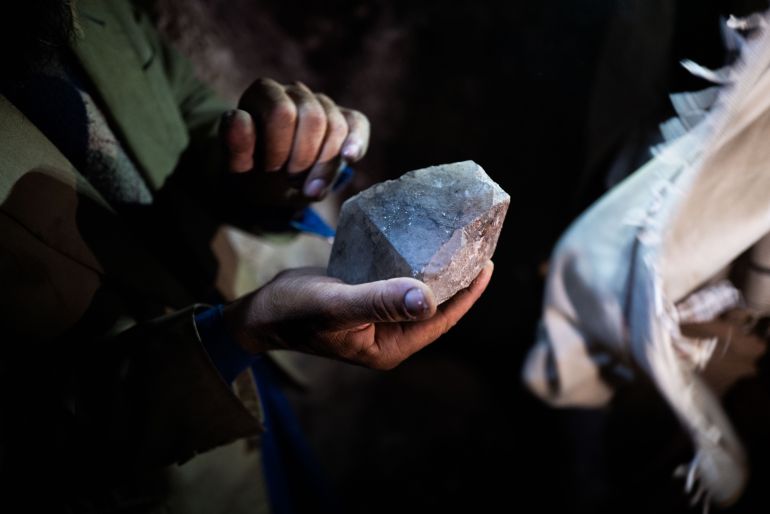
‘We pay the tax’
For men like Abid, gem mining offered an opportunity to make a living wage and continue working with his former army compatriots who had found themselves in a similar situation. After years spent in the Afghan military posted across Nuristan and Kunar, mining also allowed him to stay near his family, a welcome change.Still, many of the former soldiers were hesitant about starting this work, unsure whether their backgrounds would bring unwanted attention, harassment, or worse from local Taliban members who now lived in the area. Many of the men working in the mine were Afghan National Security Forces (ANSF) or government employees before the Taliban came to power, Abid explains. “Most were working with the national police, and the rest were in the army.”
With this worry in their minds, the men were surprised when, less than six months after returning to power, local Taliban officials announced that anyone, including former ANSF, would be permitted to operate small-scale gem mines on the condition that they pay a percentage of their earnings to local officials as tax.
“Under the previous government, [artisanal] mining was banned,” Abid says. “What we are doing here was completely illegal back then, because the government didn’t want money to end up with the Taliban. But once the Taliban took control of this area, they spread the word that people were free to mine as long as they paid the requisite two percent of their profits to the local authorities.” And so, they began mining.
Advertisement
Although Abid’s income is now far less consistent than what it was, the potential earnings are also much higher. According to the World Bank, in June 2023, the average unskilled labourer in Afghanistan earned about $100 per month. In a good month, Abid can earn five times this amount.
So far, Abid and his colleagues have been able to work without problems from the Taliban. Still, the spectre of future harassment hangs over their heads, and thirdhand stories about retributive attacks and abductions from neighbouring provinces are hard for the men to shake off. “We pay the tax, and so far everything runs smoothly,” Abid says. His expression darkens. “Only God knows what the future will bring,” he adds in a low voice.
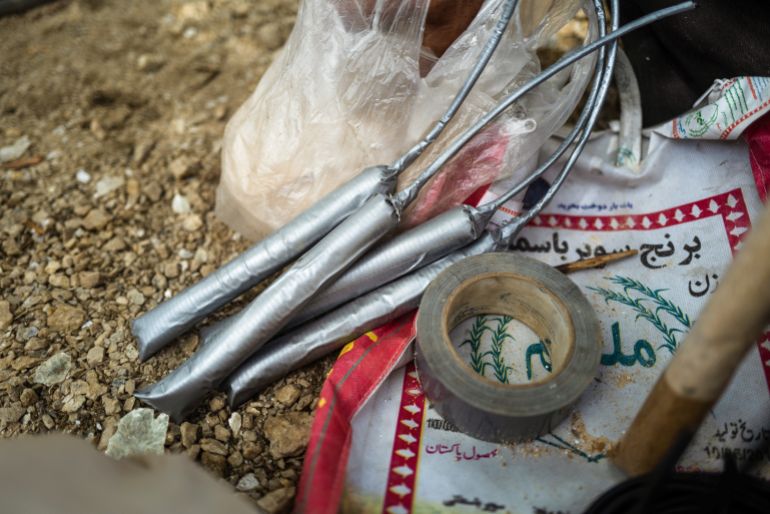
Speed and thrift
For now, the work has presented other difficulties. None of the men in Abid’s mine had previous mining experience and work with the only tools available to them: homemade dynamite – made by the miners as required since they are unsafe to store – a rusted, ageing pneumatic jackhammer powered by a Chinese-made petrol-run generator, hammers, pickaxes and head torches. The 30-odd men had pooled their savings to lease the plot of land and bought some of the tools required with loans from local investors, so the miners were already in debt before their pickaxes had even struck the first stone.Speed and thrift are the orders of the day as the men do not use safety equipment. Every dollar spent on safety is a dollar that cannot go into the miners’ pockets so there are no helmets, no safety glasses and no respirator masks to filter out the fine dust in the air. The men haven’t had any accidents in recent days, but others in nearby mines have not been so fortunate.
And the work is physically demanding – the miners spend long days chipping away at the tunnel walls, carting heavy wheelbarrows full of rock back and forth, and squatting on the ground combing through rubble for any glint of value. The air inside the mine is hot and humid, and the sound of the jackhammer is deafening in such a small space. Days begin early and end after the sun sets, and, with no fixed salary, the men work as many hours as they can each week to increase their chances of striking it big.
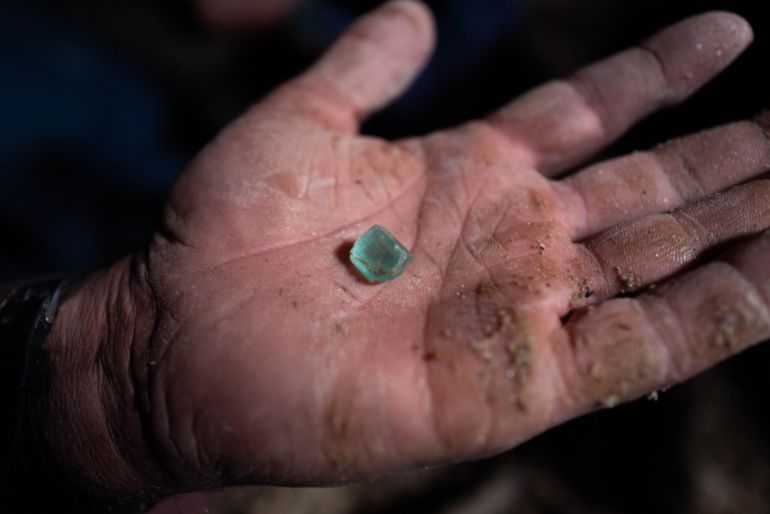
A tourmaline to add to the haul
As the acrid fumes from the explosives hang in the air, Abid and a few of his colleagues pick through broken rock. The mine, though relatively new, has already borne much-needed fruit. At the mention of tourmaline, the translucent, pale green stone most commonly found in this area, one of the men pulls a thumb-size stone from his pocket, smiling. “We found this one a few days ago,” Safiullah, 40, who only wanted to give his first name, says. “It’s big, but the quality is not that high, and it has cracks. Still, we’re happy for every stone we find.”Abid picks up a handful of glistening shards from the tunnel floor and sorts through them intently, eyes sparkling in the dim light from the holes overhead, head torches and lamps. “As you can see, it’s not a quick process,” he says, chuckling to himself. “All day it’s the same: drill, blast, dig, repeat.” Still, he is grateful to earn an income, and to be able to do so undisturbed. He dumps the shards back onto the floor and drags his hands across the surface of the rubble again, brows furrowed in concentration.
Advertisement
A few metres away, three men take turns hammering a metal bar into a seam in the rockface as they attempt to pry out a large quartz crystal. Although many of the men have not been miners for long, they quickly learned that quartz can often point to other, more valuable stones nearby.
Squatting next to Abid, another miner clicks his tongue in satisfaction and holds up a clear, green stone the size of a small fingernail. Another tourmaline to add to the day’s haul. Abid smiles and plucks the stone from his colleague’s hand, holding it up to the light. “It seems like we’re having a lucky day. This one’s small, but the quality is good,” he comments.
In this business, quality is everything. “The stones that have two colours are often the most valuable,” Abid says, wiping the grit from his palm to better inspect the stone.
Some of the most prized tourmalines are combinations of blue and green, or green and pink.
“If it’s very clear, with no cracks or marks, that’s ideal,” he explains. “This one has good colour, but I think it was broken by the blast.” He holds up his index finger and smiles, “If it was more like this size, everyone here would be celebrating.”
Advertisement
Every imperfection lowers the value of a stone to local dealers, who go from mine to mine in these remote mountainsides, often buying the best gemstones they can find in bulk to resell at higher prices in Kabul, or across the border at Pakistan’s gem markets where customers are plentiful. “If we had more precise tools, we would damage far fewer of the stones, but we have to make do with what we have,” another miner says, gesturing towards a pickaxe lying on the floor.
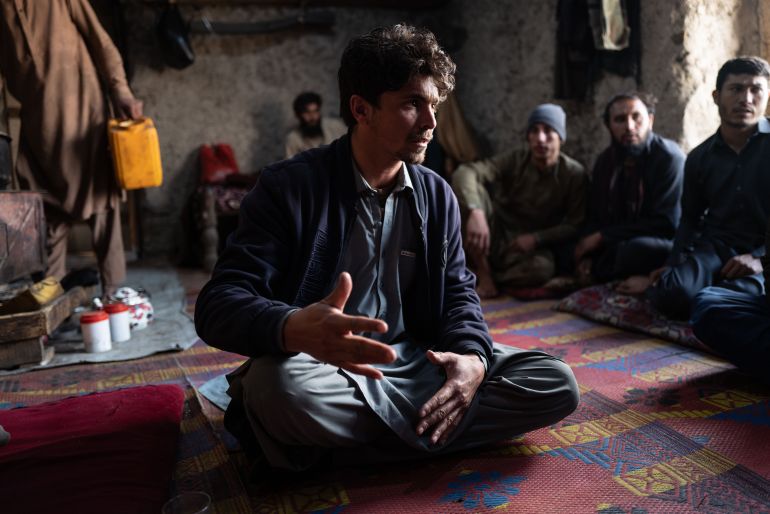
Cooperative mines
Habibullah, 22, who only goes by one name, works at a small tourmaline mine about 60km (37 miles) south of Parun. It is on the edge of the Pech valley, a rugged river gorge that stretches 50km (31 miles) from southeastern Nuristan down to Kunar’s provincial capital of Asadabad. Habibullah is slim, with close-cropped hair and a soft, melodious voice. He has been working as a miner for nearly three years. Before that, he struggled to earn a living as a daily labourer in Kabul.“Recently, I sold one stone that was about the size of my little finger, with a very rich green colour, for about 300,000 Afghanis (about $3,530),” he says, sitting in a small wooden shack near the mine.
Such a large sum can be life-changing for a family used to living on an average Afghan labouring income of about $3.30 per day.
But, like most mines in Kunar and Nuristan, Habibullah’s is a cooperative, and he did not get to keep all of this money – a significant portion went to paying for fuel and equipment costs. And any profits from the mines are divided between not just the miners, but also any outside investors. At Abid’s mine, for example, a local businessman provides fuel for the generator, another the machine itself, while another provides some of the high-cost tools like a jackhammer which allow the mine to continue running. These men take a larger cut of the profits even though they are not the ones sweating in the mine each day. The Taliban takes its cut of profits, too.
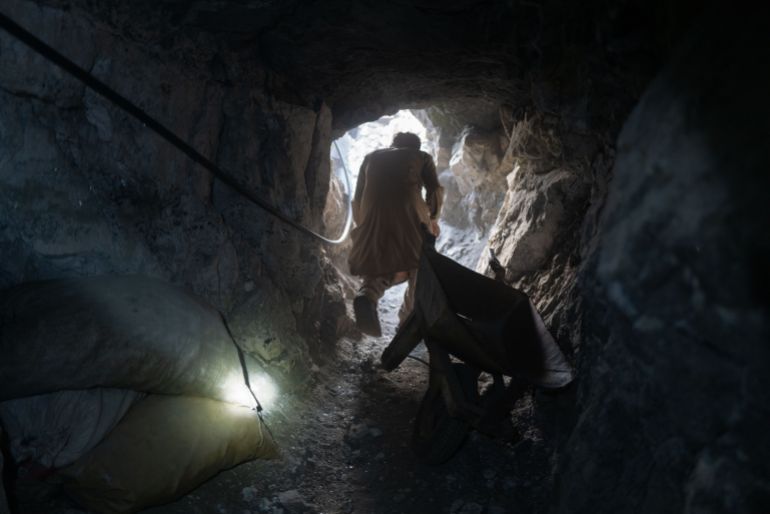
Tunnel collapses and other dangers
Habibullah knows finding such a valuable stone can come at a high cost. In January 2022, he and another miner were nearly killed when a faulty fuse caused a stick of dynamite to detonate while they were still inside the tunnel. “The fuse burned much faster than it was supposed to, and by the time we realised what was happening, we didn’t have time to get out,” he recalls. The explosion caused part of the tunnel to collapse, and Habibullah had to carry his friend out on his back. He points to a cluster of scars on his right wrist from the accident. “A reminder,” he says, with a wry smile. His friend was partially blinded in one eye.Tunnel collapses are common in these mines, even without the extra danger from faulty fuses. Hoping to dig as quickly as possible, the men seldom place wooden beams to reinforce tunnel walls, and air extraction systems are all but non-existent, leading to many lung and eye problems among longtime miners from gases and air particles in the mines. Many of the men in Abid’s mine were already beginning to develop joint, muscle and lung problems after only a few months of mining.
Advertisement
Despite the risks, the workers say men continue to flock to the mines as they are the only means of income.
Back in Parun, Abid says that he is one of the lucky ones.
“Most of the time the income we earn from mining is enough to cover the costs of food and basic necessities for ourselves and our families. Many people can’t even earn enough to feed their families,” he says. “Most of us working at this mine have some land and some animals, so we are not in such a bad situation, we can still get food even when we don’t find lots of stones. But there are lots of people who don’t have anything to fall back on to.”
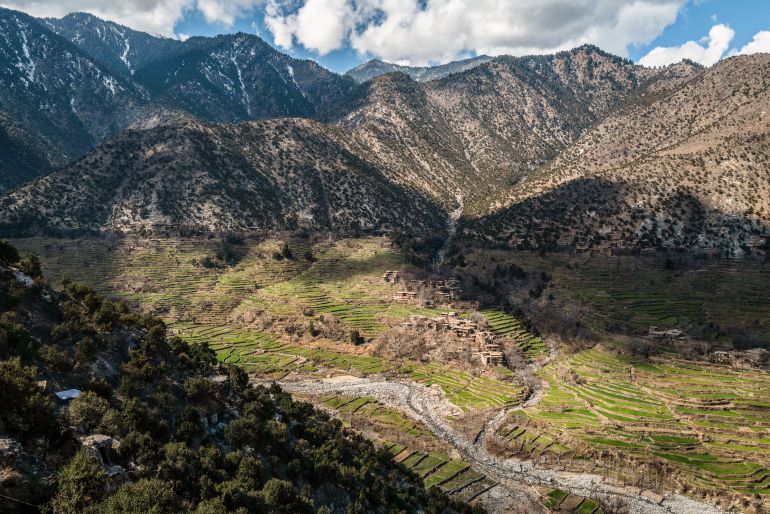
‘I’ll be here every day’
Abid says that his privately run collective waits until they have sold at least 100,000 Afghanis (about $1,169) worth of gemstones before distributing the money. “One percent goes to the local villagers, two percent to the government, one percent to local madrassas. Thirteen percent covers the costs of the equipment we use, including repairs and upkeep. Ten percent covers the cost of the petrol for our generator and the remainder is divided among the miners and those who contributed important tools to the job, such as the drill and generator,” Abid explains.Over six months, the mine earned about 1 million Afghanis ($11,689). “It’s better than many other people earn, but it’s still not much,” he says.
“In a good month where we are lucky and find lots of high-quality stones, this mine can earn several hundred thousand Afghanis. But some months, we don’t find any quality stones at all, and we can’t even cover the basic operating costs of the mine,” Abid explains. “Some mines go for months or even years without making a profit. We can’t afford to do that.”
Advertisement
As the miners finish work at the end of the day, the blue sky turning crimson, they gather at the edge of the river near the mine entrance to carefully clean their newly found gemstones. Among them are two or three high-quality tourmalines. It wasn’t the most successful day, but it was far from the worst, either.
The profit margins of running a small mine like this are razor thin, and the rates of tax demanded by the Taliban are rising. In March 2023, the Taliban administration doubled the share of profits that it takes from each mine — roughly six times as much as each miner earns. “It’s going to keep going up if the economic situation doesn’t change,” Abid says.
Until August this year, Abid and his fellow miners have found and sold enough gemstones to support their families and now, having worked through the previous mine, have moved onto a new site in the area. Abid says the number of new miners continues to increase in Nuristan due to joblessness and, although cost-of-living prices have begun to decrease from a peak in mid-2022, many families still struggle to cover basic costs.
Despite the hard work and rising taxes, Abid is determined to continue mining. “As long as there are stones to find, I’ll be here every day,” he reflects. “It’s a way for me and my family to survive, and that’s not something I can turn away from.”

The former Afghan soldiers turning to gem mining to survive
In remote Nuristan province, some mine to support their families after losing their jobs when the Taliban took power.
Recent Article on Al-Jazeera. It clearly shows that former NDS officers hiding out in Nuristan digging jems........no doubt to fund their TTP project.
Last edited:




